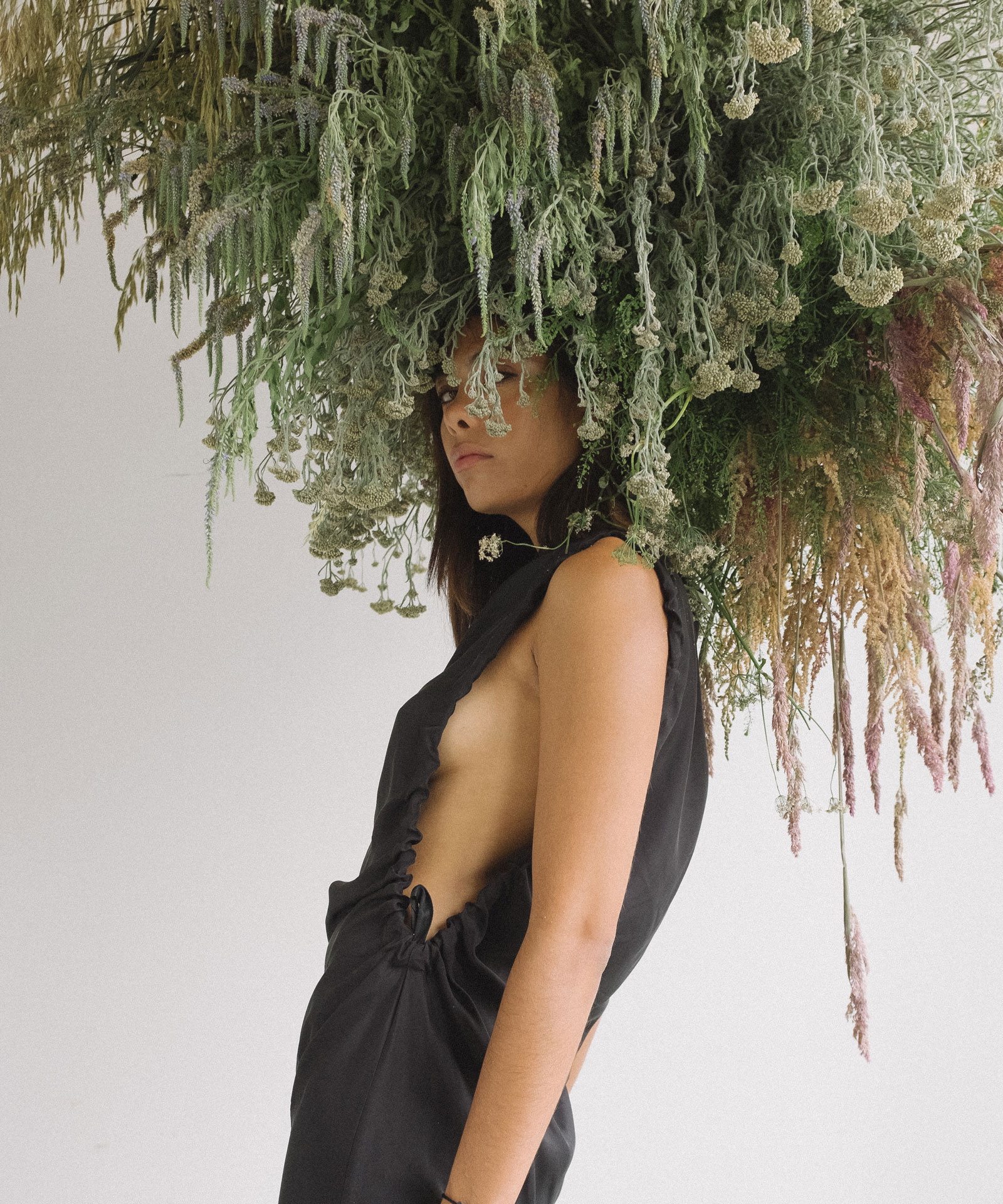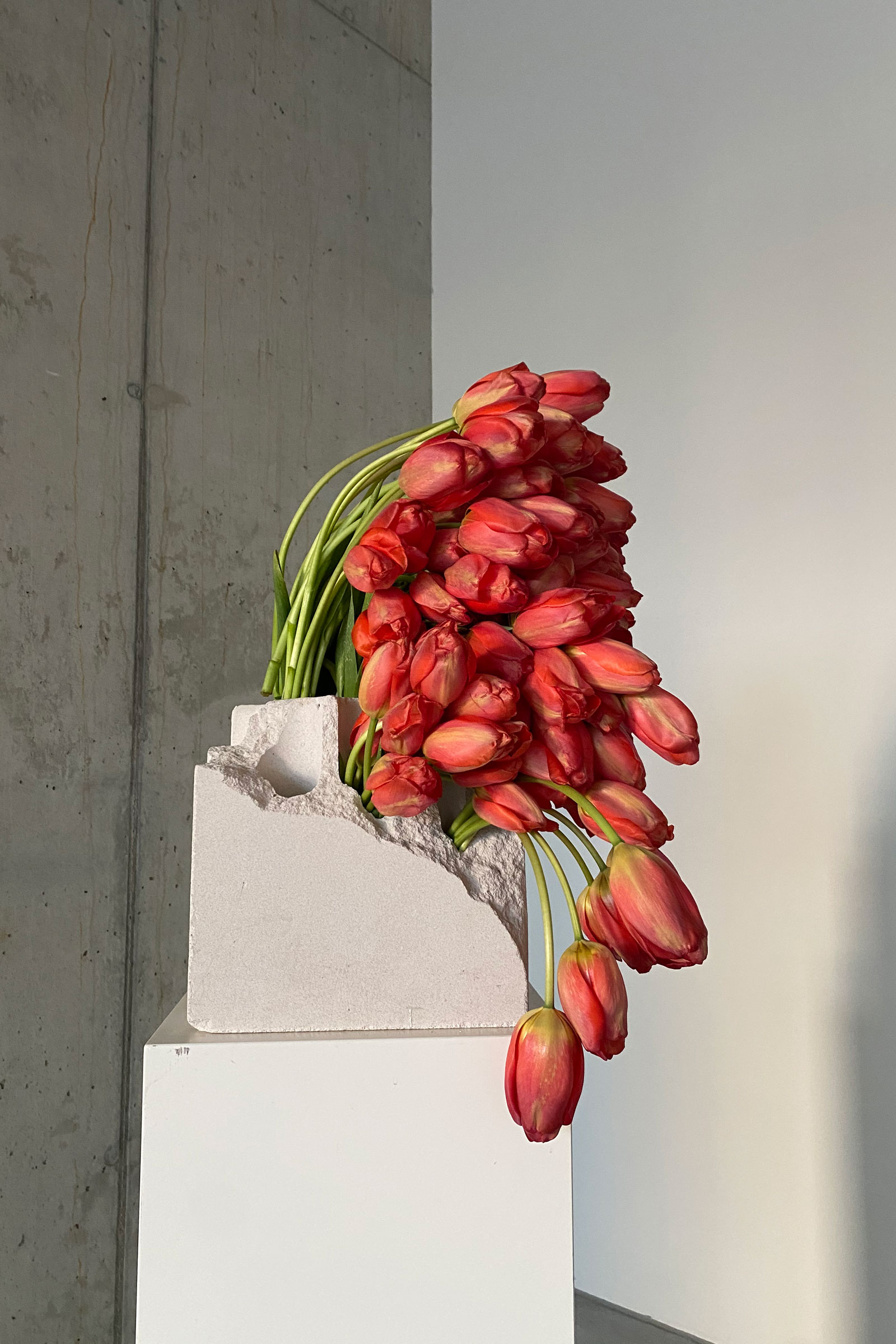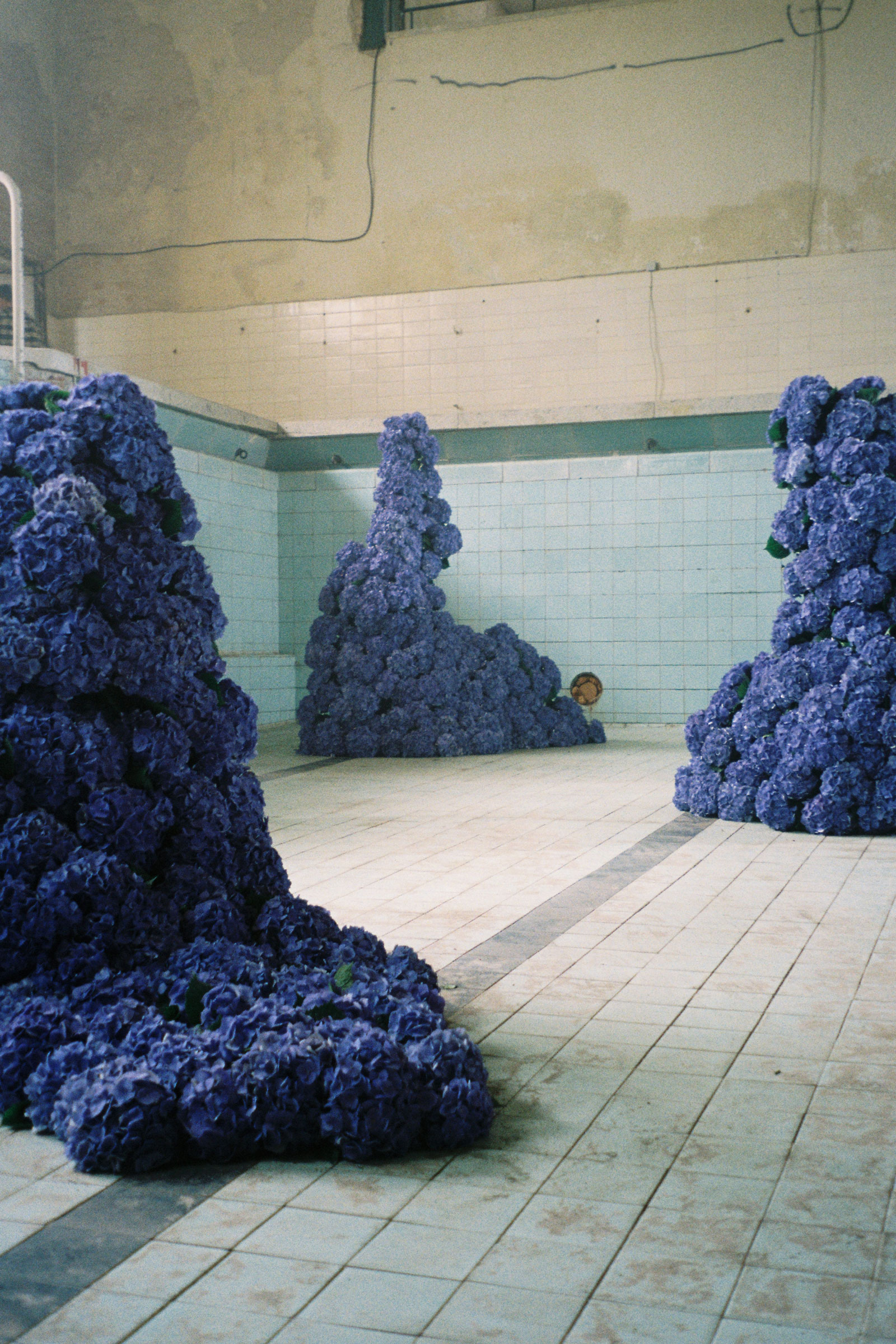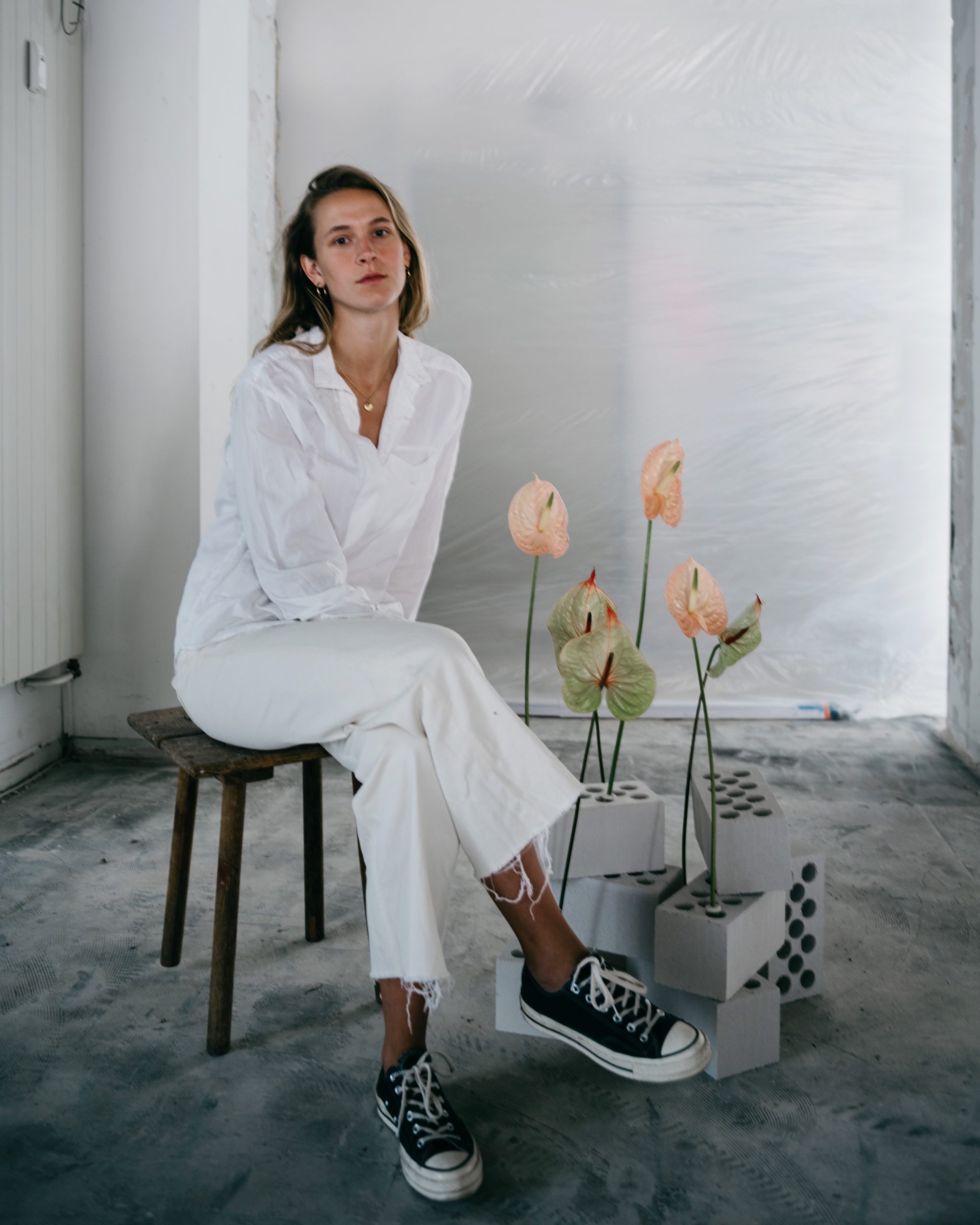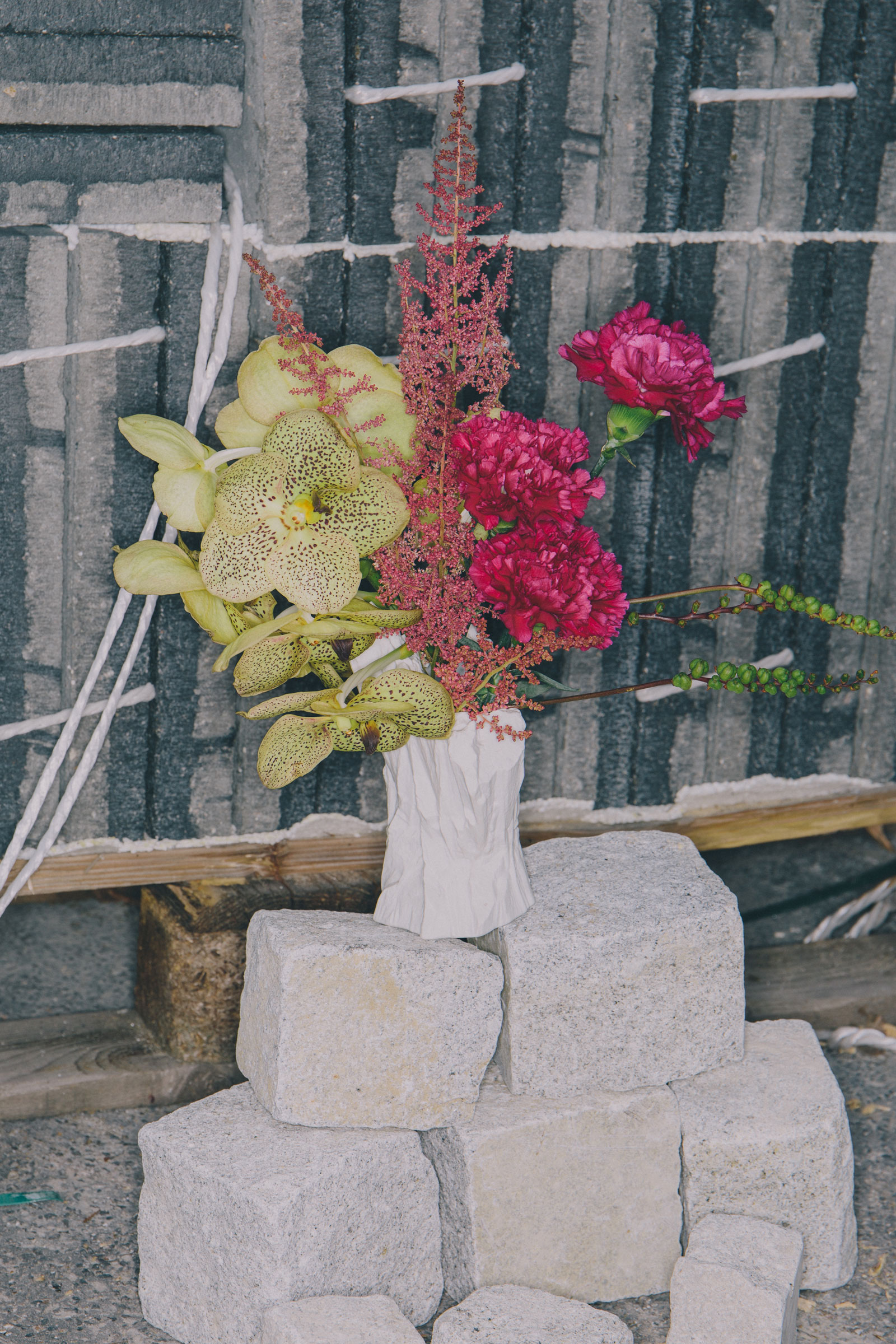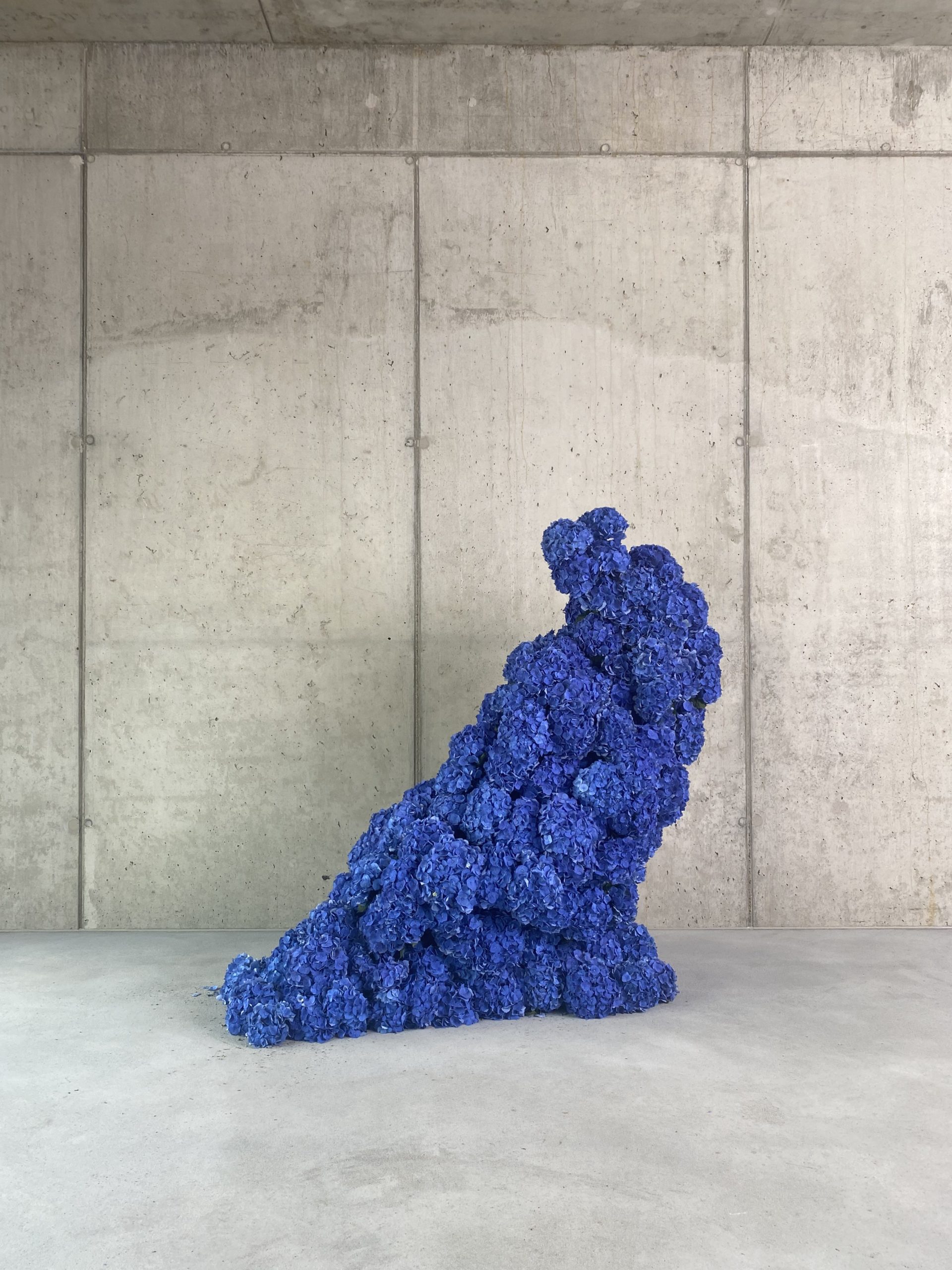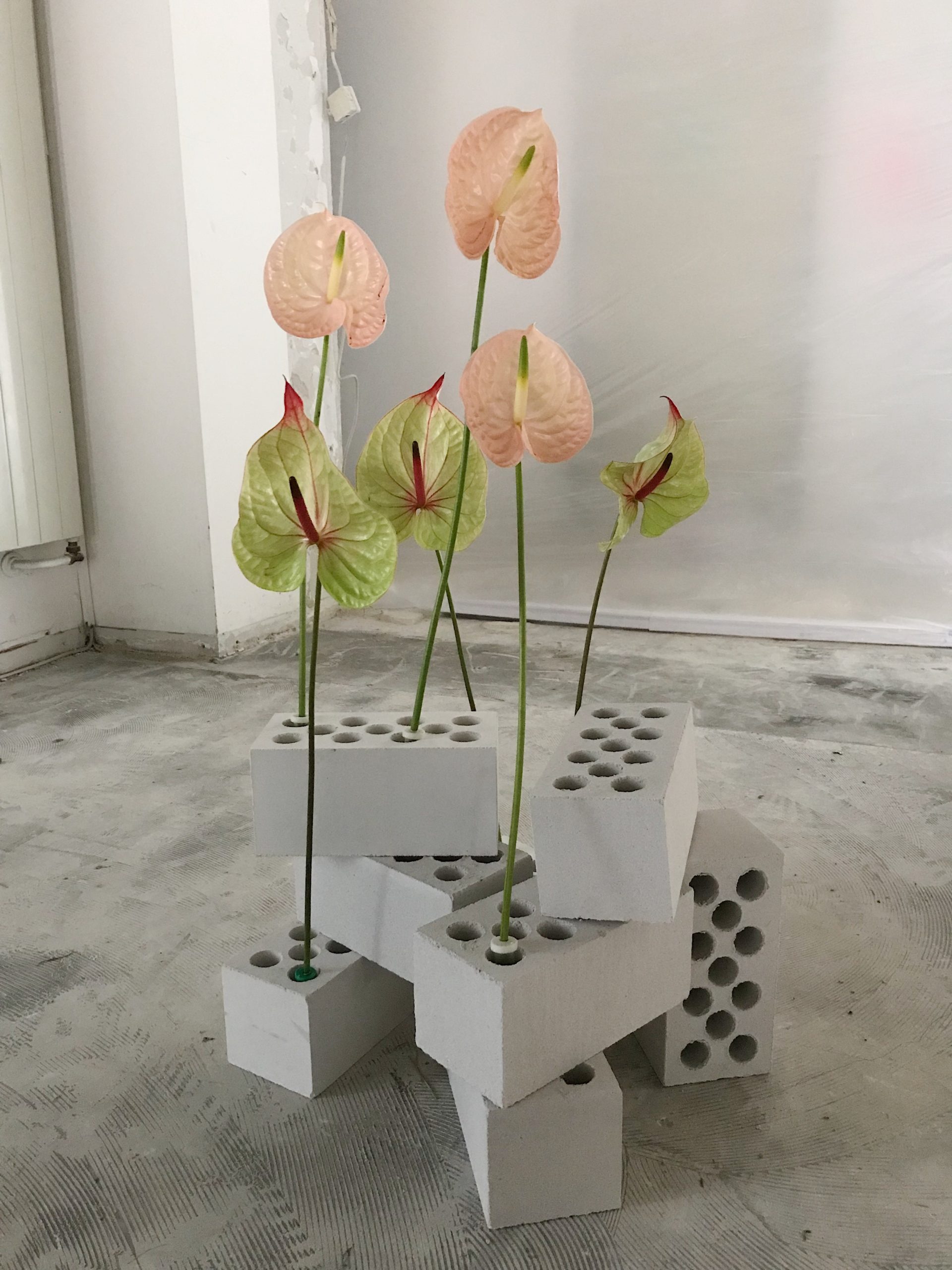It’s just past lunchtime in Berlin when Lilo Klinkenberg finishes doing what she does nearly every morning. “I am looking for a big tree to bring to a shoot next week. So I was outside Berlin looking at trees. It was a lovely start to the day!” She bursts out laughing at how kooky it sounds—the first of many such displays of endearing self-effacement during our virtual conversation.
Lilo is a spatial artist, and her medium is flora. Trees, flowers, bushes, and mounds of moss are both her inspiration and the raw materials she uses to create scenography, sculptures, and installations for a variety of brands, events, and clients—and for herself.
Lilo was born in Berlin and has a naturally sweet demeanor coupled with an effortless sense of cool that underlines the city’s young creative class. Studiolilo, her business, is in the Schöneberg neighborhood, on the ground floor of a new build. “I really love this area because it’s still developing and reminds me of old Berlin,” she says. “It’s the only neighborhood in Germany that still allows sex workers on the street. In fact they are outside my door right now!”
This scene may sound incongruous when describing an artist who works with such a graceful medium as flowers, but Lilo is far and away from the accepted definition of a “floral artist.” Her work is considered, sculptural, avant-garde—transforming a space with manmade-natural juxtapositions. Tellingly, her new studio space is industrial, brutalist almost, with concrete walls and not much furniture. A few potted palms and a back patio of green lawn are the only nods to nature. “Yes!” she agrees. “I really like the contrast. I didn’t really want to move into a historic building because I think working with flowers can get really cheesy and baroque. I need contrast.”
- Photo by Lilo Klinkenberg
- Lilo used wire to reimagine the popular flower’s form on the bottom of a dilapidated swimming pool. Photo by Lilo Klinkenberg
Lilo studied fashion design but realized before she finished her course that it wasn’t for her. “To just design clothing … it never really made me happy. I always needed to create an atmosphere around it, or something with it, so it made a complete concept.”
At some point during her fashion studies, which she finished despite her hesitations, she opened a restaurant-events venue together with her two sisters. Lilo created the floral arrangements for the events they hosted. Word traveled, and business, well, blossomed. At first for friends and friends of friends, then for advertising and music video art directors.
“The most important thing for me, the most touching thing for me, is being able to transform flowers into something totally different,” she confesses. A case in point is a project she described as “hydrangea in my vision.” The client, a director of a music video clip, asked her to fill an abandoned swimming pool with blue flowers. “I said, ‘Yeah, I can do that, but it’s going to cost you,” she laughs. “And the concept felt too easy.” Instead, she proposed five amorphous formations using wire and blue hydrangeas, and placed them at the bottom of the empty, dilapidated pool. “They stopped looking like flowers and just became these weird blue sculptures, like things growing out of the floor.”
Lilo thinks about another of her works, “Tulips Analogue.” “The tulips in this are four days old. I waited for them to open up until I started working with them. It was an experiment. I love the way tulips turn themselves to the floor, and the petals drop so purposefully.”
- Photo by Yannes Kiefer
- This August 2019 free project, “Bricks,” was in collaboration with Berlin photographer Fabian Brennecke. Vase via outofuseberlin. Photo by Fabian Brennecke
Given that the floor has been an important element in the compositions of the works we have been discussing, I ask if there is anything lying on the floor next to her desk. She directs me to sheaves of freshly cut golden wheat, which she has been experimenting with for a future installation in the Berlin bakery Kyte. “They bake with single-source flour made from wheat harvested from a farm close to Berlin,” she explains. “ I went to the fields to cut the wheat myself. It was such a nice thing to do, to be so close to the product. Now I am going to install a wheat field inside their stores.”
How does she prepare for a project of that scale? “I take lots of photos and then use Photoshop because I am really bad at drawing,” she laughs. “But when I first come into the space I see a corner or a shaft of light. And from there I start imagining.”
- Photo by Lilo Klinkenberg
- Photo by Lilo Klinkenberg
- Photo by Lilo Klinkenberg
